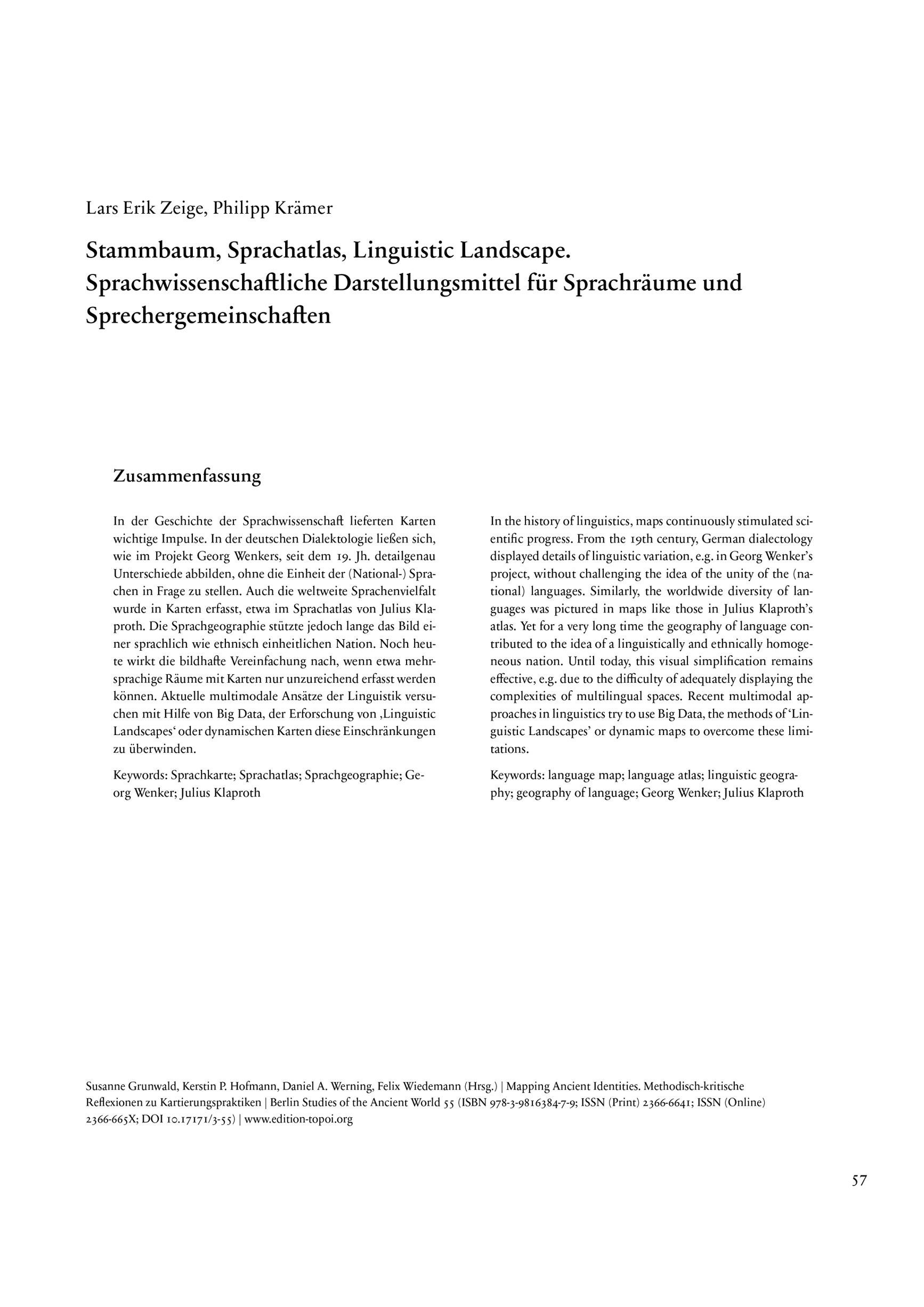Stammbaum, Sprachatlas, Linguistic Landscape
Sprachwissenschaftliche Darstellungsmittel für Sprachräume und Sprechergemeinschaften
In the history of linguistics, maps continuously stimulated scientific progress. From the 19th century, German dialectology displayed details of linguistic variation, e.g. in Georg Wenker’s project, without challenging the idea of the unity of the (national) languages. Similarly, the worldwide diversity of languages was pictured in maps like those in Julius Klaproth’s atlas. Yet for a very long time the geography of language contributed to the idea of a linguistically and ethnically homogeneous nation. Until today, this visual simplification remains effective, e.g. due to the difficulty of adequately displaying the complexities of multilingual spaces. Recent multimodal approaches in linguistics try to use Big Data, the methods of ‘Linguistic Landscapes’ or dynamic maps to overcome these limitations.
In der Geschichte der Sprachwissenschaft lieferten Karten wichtige Impulse. In der deutschen Dialektologie ließen sich, wie im Projekt Georg Wenkers, seit dem 19. Jh. detailgenau Unterschiede abbilden, ohne die Einheit der (National-) Sprachen in Frage zu stellen. Auch die weltweite Sprachenvielfalt wurde in Karten erfasst, etwa im Sprachatlas von Julius Klaproth. Die Sprachgeographie stützte jedoch lange das Bild einer sprachlich wie ethnisch einheitlichen Nation. Noch heute wirkt die bildhafte Vereinfachung nach, wenn etwa mehrsprachige Räume mit Karten nur unzureichend erfasst werden können. Aktuelle multimodale Ansätze der Linguistik versuchen mit Hilfe von Big Data, der Erforschung von ‚Linguistic Landscapes‘ oder dynamischen Karten diese Einschränkungen zu überwinden.

